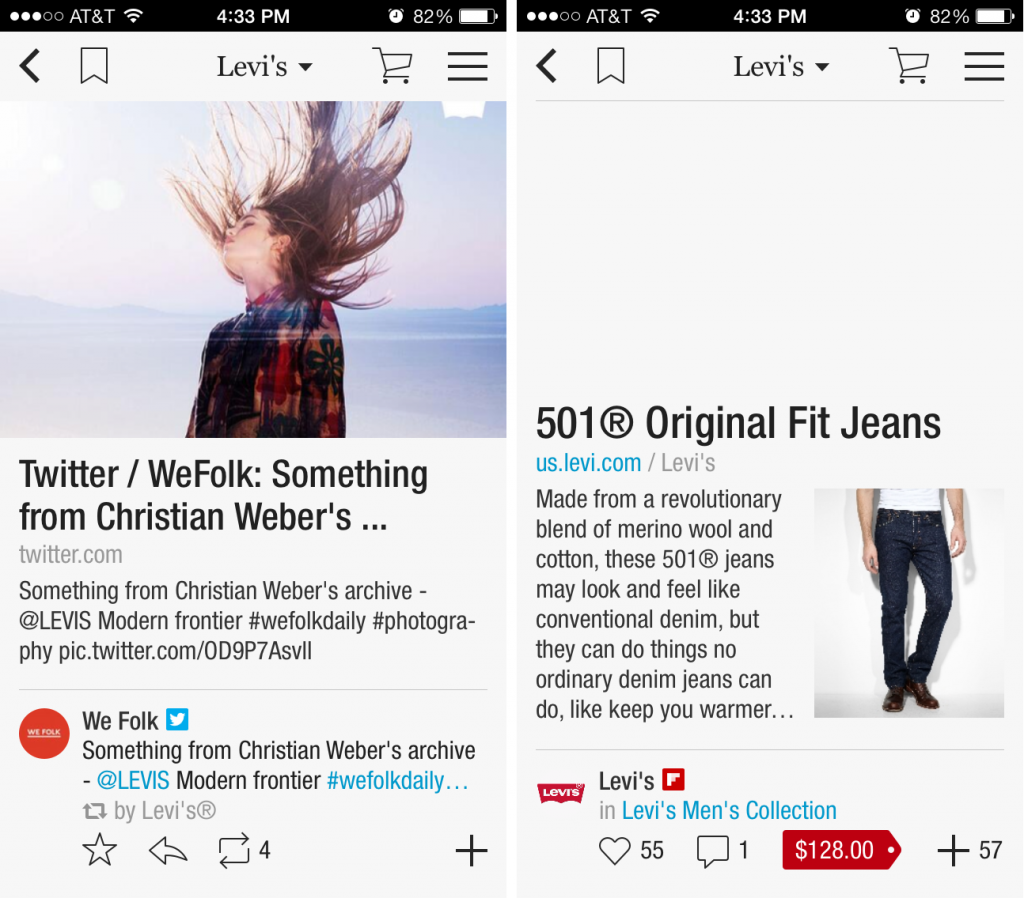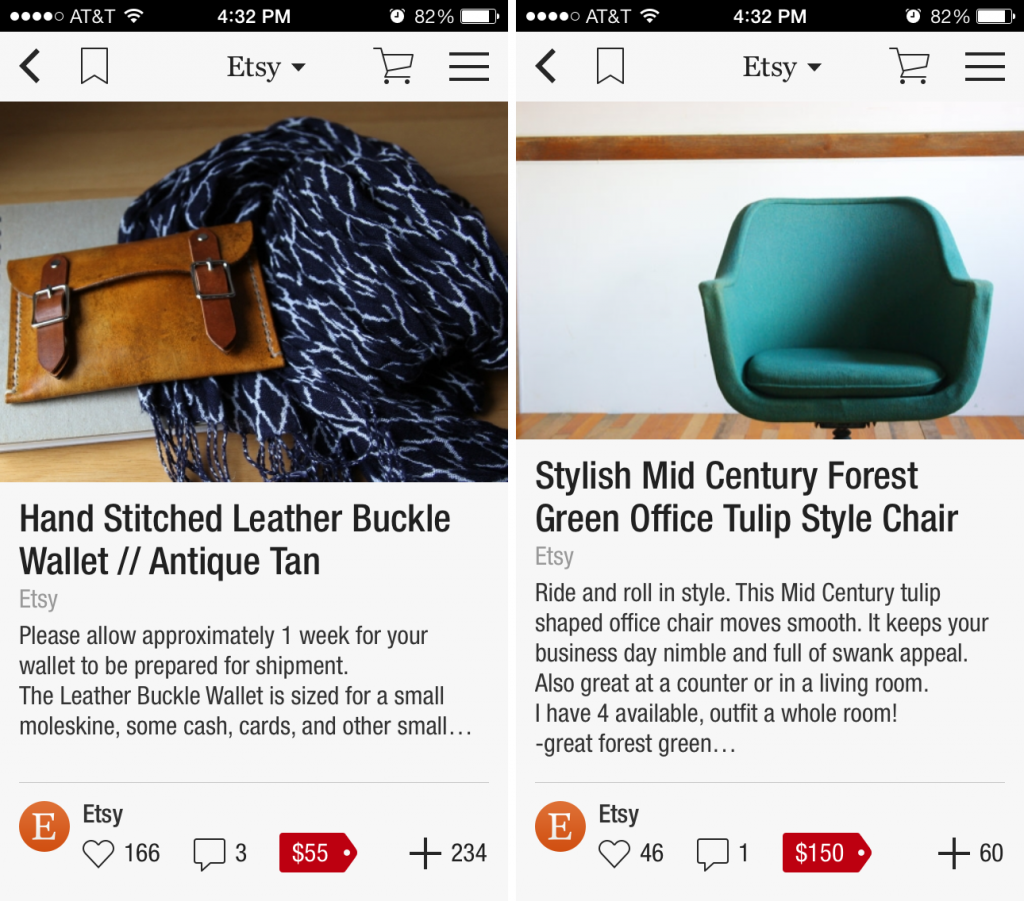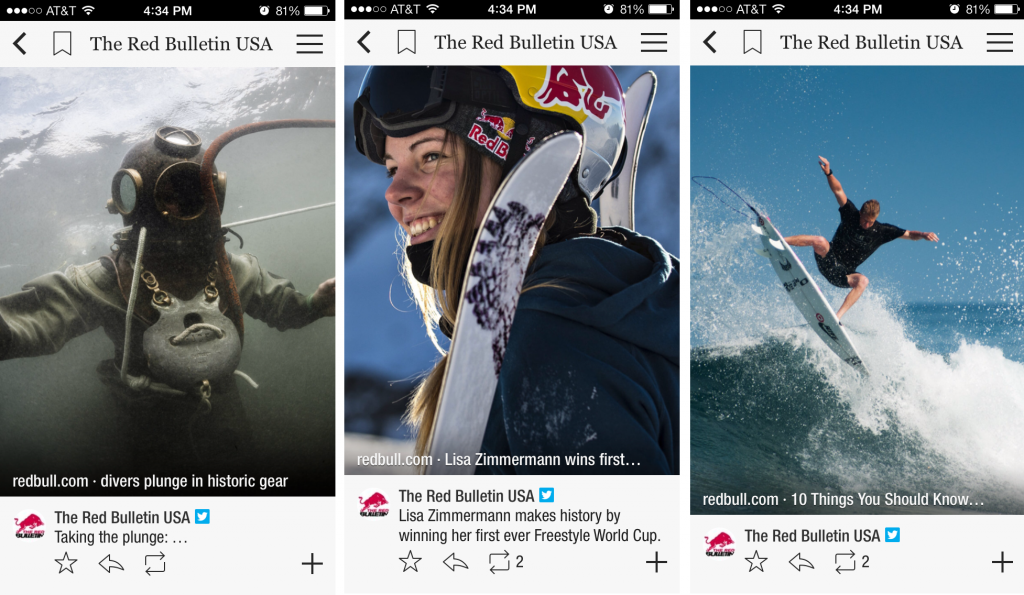Mobile Commerce: 4 creative approaches for using Flipboard
Creating an awesome experience that engages users across desktop, tablet and mobile devices is tough.
When you factor in additional research projecting significant growth in Internet usage among mobile users, the need for brands to build a presence in the mobile marketplace is also increasing.
In short, the mobile monster is growing and the race is on, so what do you do?
Creativity drives mobile engagement
Mobile apps are a powerful tool to help bridge the gap in connecting with mobile users, but the trick is taking a creative approach to using them.
Flipboard, for example, is an app that helps users turn aggregated Web content into customized magazines. Other users can subscribe to your magazine, creating a captive audience for your curated content.
In today’s MarketingSherpa Blog post, we will take a look at how some brands have incorporated Flipboard into mobile marketing to provide examples that will hopefully inspire your efforts to tame the mobile monster.
Cisco’s “The Futurist Feed” aggregates tech news from around the Web
Cisco’s “The Futurist Feed” is an aggregate of tech content from around the Web.
In my view, this is one of the easier approaches to marketing on Flipboard, as aggregating content is really a core part of the app’s functionality. Consider this approach as a gateway tactic to help get your feet wet and experiment a little while keeping brand top-of-mind.
Levi’s Jeans uses fashion news to create a social catalog
Levi’s Jeans Flipboard magazine was an early adopter of using the app for e-commerce. Its magazine launched in late 2012 as part of a larger campaign. I like this approach as it has helped pave the way for integrating cart functionality into a social content experience.
Etsy delivers crafty P2P e-commerce to the mobile masses
Etsy adopting Flipboard is no real surprise.
For an e-commerce company with a goal to “solve social and environmental problems” built into its mission, adopting an app driven by social interaction is like a duck taking to water.
Etsy’s peer-to-peer e-commerce website has a significant social element to its business to begin with.
Its use of aggregated social content mixed with purchasable products from its users makes this a great example of bridging an organic social experience into a mobile one.
Red Bull uses its massive content machine as a full-blown news feed
Red Bull has a massive content marketing machine that produces everything from videos of stunts to sponsoring live music and sport events.
The energy drink company also has a full print version magazine, so making the move to deliver “The Red Bulletin USA” content to mobile users as a news feed is simply giving Red Bull’s megaphone a little more reach.
I like this strategy for two reasons:
- It’s an excellent example of repurposing content you’ve already created to reach a new audience.
- It transitions the heavy lifting of awareness from “making news” to “being the news,” which is not an easy thing to do.
There’s no app for creativity beyond convention
Ultimately, there’s no magic bullet (or app) that will solve your challenges in mobile marketing. Apps can help get you there, but the success of creativity rests in the limits of your imagination.
Hopefully you can find the willingness and momentum in your organization to take some risks and think outside of convention.
Convention may feel safe, but it provides no guarantee of delivering something of value to your customers.
Also, these examples highlight just a few of the creative strategies in approaching mobile marketing and e-commerce. Feel free to share some of your insights in the 2014 MarketingSherpa E-commerce Benchmark Report survey. Deadline for the survey is February 14, 2014.
You may also like
Social Media: 3 brands that totally get using Vine [More from the blog]
Social Media Marketing: Sporting goods company increases Facebook reach 366% with content contest [Case study]
Categories: Ecommerce Eretail app, e-commerce, flipboard, mobile apps, mobile marketing













